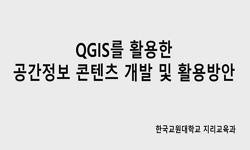Recently, as a means of recruiting new students, campus maps of diverse style are produced and utilized, together with functional activities of university facilities and information within the campus. Unlike text-based contents, a map can enhance the ...
http://chineseinput.net/에서 pinyin(병음)방식으로 중국어를 변환할 수 있습니다.
변환된 중국어를 복사하여 사용하시면 됩니다.
- 中文 을 입력하시려면 zhongwen을 입력하시고 space를누르시면됩니다.
- 北京 을 입력하시려면 beijing을 입력하시고 space를 누르시면 됩니다.

Research on Campus Map Graphic Information through Analysis of User Coloring Expression = Development of a “Participation Style Map” in Platform Study
한글로보기https://www.riss.kr/link?id=A100419907
- 저자
- 발행기관
- 학술지명
- 권호사항
-
발행연도
2011
-
작성언어
English
- 주제어
-
등재정보
KCI등재
-
자료형태
학술저널
-
수록면
9-21(13쪽)
- 제공처
-
0
상세조회 -
0
다운로드
부가정보
다국어 초록 (Multilingual Abstract)
Recently, as a means of recruiting new students, campus maps of diverse style are produced and utilized, together with functional activities of university facilities and information within the campus. Unlike text-based contents, a map can enhance the value of information that a user wants to obtain. The purpose of the present study is to examine the sensitivity that the students actually feel about their campus and utilize it in the production of student participation-type campus map through an analysis of the survey result that was obtained from the students and the coloring experiment of the outlines of the produced map.
In recent years, most of the universities provide their campus information using images, and thanks to the development of graphic and Internet technologies, map service that utilizes multimedia and 3-D representation is increasing. The elements that are represented in a plane map consist of significant and promised symbols, but overly realistic graphic elements of the map can give unwittingly a sense of confusion as they are toodetailed and contain unnecessary information. This is especially so in the case of 3-D map that employs both realistic representation and symbolic representation. But the fact is, the information on the map looks as if they are nicely displayed rather than they are made based on the experience of students who actually live in the space called campus. Also, as the tendency of the users’to obtain information becomes more individualized, they prefer information that are diverse and more concrete. Therefore, we have produced a campus map utilizing a new type of multimedia that complemented shortcomings of the existing map service, and examined the difference in their recognition of the outline images of the graphic elements that are contained in the newly produced map between the elements on the map or landmarks and the actual elements that are based on the users’experience through coloring. As a result, we have discovered that the map was not just an object to look at but an object that can be compared with what they knew on the basis of their experience. It also turned out that, on the map as a whole, the users tended to classify information that has more relationship with themselves preferentially.
목차 (Table of Contents)
- (Abstract)
- 1. Introduction
- 2. Research Goal and Theoretical
- 3. Means of Research
- 4. Conclusions
- (Abstract)
- 1. Introduction
- 2. Research Goal and Theoretical
- 3. Means of Research
- 4. Conclusions
- References
동일학술지(권/호) 다른 논문
-
국내 공중파 TV광고의 품목별 키네틱 타이포그래피 연구
- 인제대학교 디자인연구소
- 홍동식(Hong, Dong-Sik)
- 2011
- KCI등재
-
40-50대 여성소비자의 자아이미지에 따른 슈즈제품 구매성향에 대한 분석 및 평가
- 인제대학교 디자인연구소
- 김선아(Kim, Sun-Ah)
- 2011
- KCI등재
-
공간구조분석에 의한 캠퍼스 구내 편의시설의 접근성 평가
- 인제대학교 디자인연구소
- 조은길(Cho, Eun-Kil)
- 2011
- KCI등재
-
- 인제대학교 디자인연구소
- 이상진(Lee, Sang-Jin)
- 2011
- KCI등재




 DBpia
DBpia


